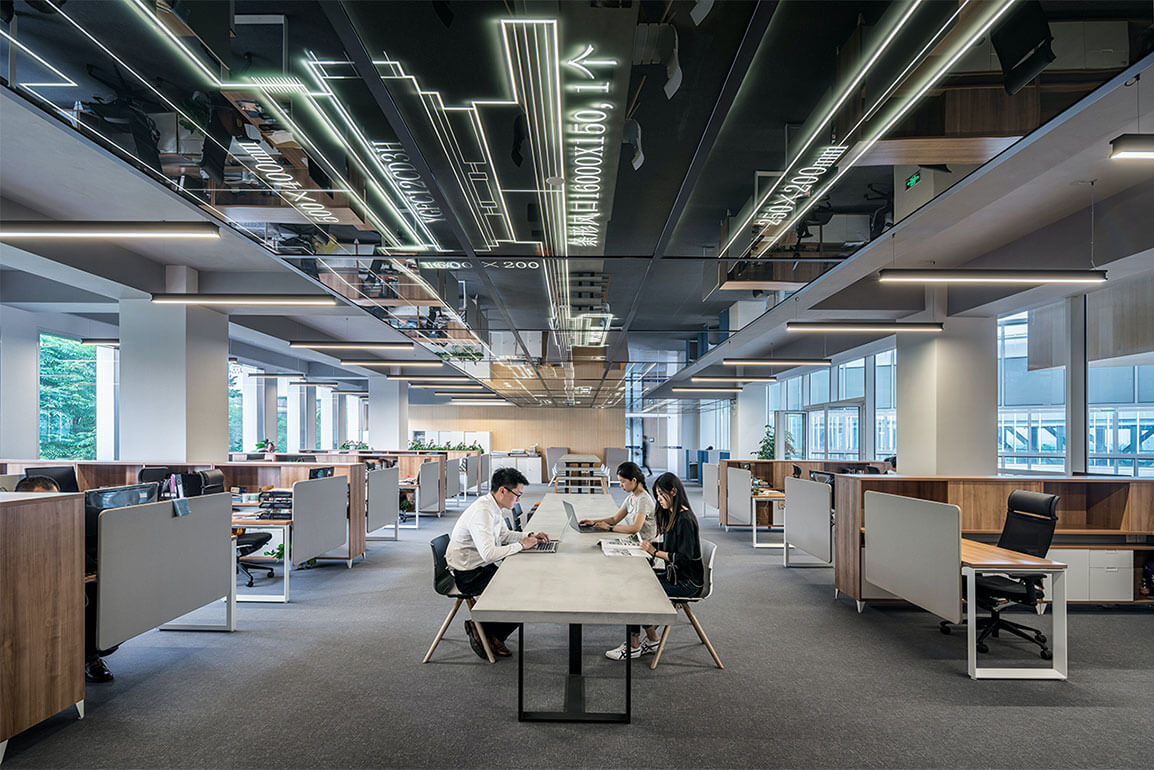To answer the question “What would the workplace look like post COVID-19?”, we need to recognize that the workplace responds to the times and, therefore, pandemic-driven trends will inevitably shape new workplace model and designs in the future.
These days apart from technology and the rising cost of real estate, workplace design is also influenced by human capital. As companies put more value on human capital, organizations have also become more conscious of the multi-generational and multi- cultural workforce that now share the same office space. Ideally, this space should be able to address different needs, wants, and adapt to nuances.
Above all these COVID-19, with its vast effects on health, safety, and costs, has spurred new trends (or revived some) that will impact how we design our workplaces moving forward.



1. Social distancing. Keeping distance of one to two meters is the new norm. Offices and establishments alike cannot accommodate customers at 100% capacity. For companies that are bringing back everyone to the office, this could mean searching for additional space for staff to work in, whether it’s an office extension or seat leasing.
2. Virtual meetings. The increasing concerns and risks of conducting face-to-face meetings mean that the need for meeting rooms will decrease. To utilize space better, existing meeting rooms will be converted as standard workstations or something else that can be more productive than just a vacant space.
3. Digitization or going paperless has been a decades-long campaign and a practice in many companies as it is our social responsibility to reduce our carbon footprint. But because of the pandemic, even paper-reliant companies had to make that switch to go paperless as away to reduce the risk of spreading viruses.
4. Remote working. Even pre-pandemic, this has already become an arrangement for other flexible or non-traditional organizations and companies. As managers and staff become more comfortable and enjoy the benefits of remote working (e.g. cost efficiency, increased productivity, and risk-free of the virus), the more this is seen to extend after the pandemic. Remote working does not necessarily mean working from home. It could be somewhere close home, in a coffee-shop, a co-working space, or wherever you can find your peace and quiet, and work productively and conveniently.
5. Integrated facilities management. Another trend that started, and will persist beyond COVID-19, are new protocols for housekeeping and overall facilities management focusing on sanitation and air quality.
6. Social spaces. Social activities and gatherings have been hampered by social distancing. People and companies have been converting existing social spaces such pantries, game room, and office gym into additional work stations or even storage spaces.
7. Subleasing or shadow spaces. End-users place their fully fitted office space in the market for sublease as a way to reduce operational cost and maximize telecommuting or remote working.
Having seen these trends, we envision that the workplace will evolve from central to dispersed. While organizations typically operated from central headquarters before, the forced experiences and lessons learned during the COVID-19 pandemic made us realize that we need not be physically together to function well—whether as an individual contributor, a team, or the whole organization for that matter. However, because of the value we place on human capital and their development, bringing people together for experience, coaching, and mentoring means that the organization needs to provide the physical space that will support these.
Bringing these two together, the future workplace may likely be a “service offering”—that is, one where the staff can choose where or which venue is best suited for the task at hand. Choices may include the head office/headquarters, the staff’s home, or a facility that is close to home, be it a serviced office or a local café or fast food.
Your organizations’ future workplace will likely be influenced by everything we have mentioned. It is good to know the industry’s best practices, but it is more important to get the pulse of your organization as you craft your way forward. This is the beginning of good change management.
